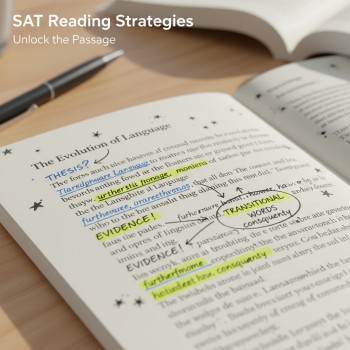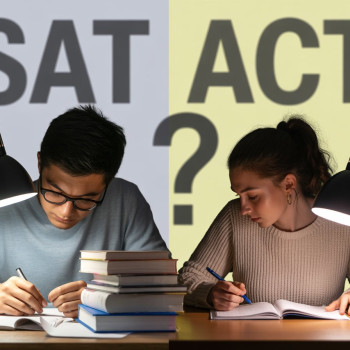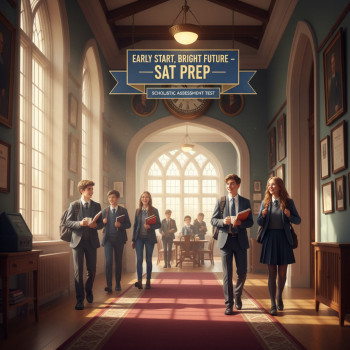Can You Get Into Top Colleges With a 1300 SAT Score?
Short answer (and why the long answer matters)
Yes — sometimes. But that tiny three-letter word, “sometimes,” is where everything important hides. A 1300 on the SAT is a solid score: it’s above the national average, shows real academic promise, and opens many doors. Whether it’s enough for a particular “top” college depends on what you mean by “top,” the school’s policies (many are test-optional), and the rest of your application—your GPA, coursework, essays, recommendations, extracurriculars, and the narrative you present.

Understand what a 1300 really means
Numbers are useful because they’re simple. But they can also mislead when taken out of context. A 1300 is roughly in the upper-middle of the SAT range. It’s better than average, but below the median for the most selective universities. That’s not a bad place to be—it’s a strong foundation you can build from.
How colleges use SAT scores now
- Many colleges are test-optional. That means they don’t require an SAT score, but will consider it if you submit one.
- Colleges that require or consider scores treat them as one element: part of a holistic review including grades, rigor of coursework, essays, recommendations, and activities.
- A score that’s near or above a school’s middle 50% range helps; below that range means your other materials must shine.
Put simply: a 1300 can be a helpful asset for many schools, and in some cases it’s competitive even at selective colleges—especially if your scores align with other strengths in your application.
Which “top” colleges might a 1300 be competitive at?
“Top colleges” is a flexible phrase. If you mean the hyper-selective dozen or so (think the very smallest admit rates, single-digit acceptance), a 1300 alone will probably be below their middle test ranges. But if you mean excellent, well-respected universities with strong programs—many of them are reachable with a 1300 when paired with strong grades, compelling essays, and standout activities.
Categories to consider
- Highly selective (Ivy-caliber): A 1300 is usually below their typical range. You can still apply—especially if you’re strong elsewhere or the school is test-optional—but be prepared for a competitive field.
- Selective: Many selective private universities and strong public flagships have middle-50 ranges that overlap a 1300, or will consider you holistically if your GPA and profile are strong.
- Strong match/safety schools: A 1300 is often above the median or squarely in range for solid colleges where you’ll receive a rigorous education and excellent opportunities.
Practical strategy: what to do with a 1300
Don’t panic and don’t assume you’re stuck. Use the score as a starting point for a layered plan: evaluate, improve (if you want), and craft the rest of your application to highlight strengths that a single number can’t show.
1. Research schools intelligently
Use each college’s published data (middle 50% SAT ranges) and their current testing policy (test-optional, test-flexible, or test-required) as your guide. If your 1300 is within or above the middle 50% for a school, submitting it is usually a net positive. If it’s below, think carefully about whether submitting will strengthen your case or be unnecessary.
2. Play to your strengths
An admissions officer reads a packet of materials for minutes—sometimes hours, often less. What stands out is narrative coherence. If your transcript shows upward momentum, you have a compelling extracurricular leadership story, or your essays reveal maturity and clarity, those things can outweigh a modest SAT.
- Grade trend: upward trajectory matters more than a flat GPA.
- Rigor: AP/IB/dual enrollment in relevant subjects shows you sought challenge.
- Essays: tell a specific, personal story that demonstrates growth and fit with the college.
3. Consider retaking or submitting other scores
If you think you can realistically add 30–100 points with targeted prep, a retake is worth considering. A gain can meaningfully change perceptions. Alternatively, if your school accepts the ACT or a superscored approach, explore those options. If you’re already close to a school’s median, a small improvement can swing your score into the comfortable range.
4. Use test-optional thoughtfully
Test-optional is not a free pass to omit standardized data; it’s a strategic choice. If your score strengthens your application in the context of the school’s range, submit it. If it doesn’t, you might opt to submit other forms of evidence—academic projects, graded work, or recommendations that highlight your skills.
How to strengthen the rest of your application
Think of the SAT as a loud instrument in a chamber orchestra. If it’s playing at a moderate volume, make the strings, wind, and percussion sound exquisite. Here’s how.
Academic record and curriculum
- Rigor: Take the most challenging courses you can handle without damaging your grades. Colleges value challenge plus strong performance.
- Grade improvement: If your GPA improved over time, highlight that trend in your application through counselor notes or essays if appropriate.
- Context: Admissions officers evaluate your performance relative to your school’s opportunities—APs at a small rural school weigh differently than at a large private school.
Essays and personal statements
This is where a 1300 can be neutralized or overshadowed. A brilliant essay that tells a clear story—about resilience, curiosity, or leadership—makes an application memorable. Specific tips:
- Show, don’t tell: use moments, dialogue, and sensory detail.
- Demonstrate growth: colleges love to see learning and change.
- Connect to fit: explain why the college’s programs or culture matter to you.
Extracurriculars and demonstrated interest
Depth beats breadth. Sustained involvement with measurable impact—founding a club, leading a community project, producing significant creative work—matters more than ten fleeting activities. Demonstrated interest (campus visits, emails/interactions where appropriate) can also help in some admission offices.
When a 1300 may be a barrier — and how to respond
If your dream school’s middle 50% SAT range sits well above 1300 and their admissions are highly score-aware, you’ll need to decide: invest time in improving the score, or double down on making other parts of your application irresistible.
If you choose to improve the score
- Create a targeted study plan focusing on your weakest section (Math or Evidence-Based Reading & Writing).
- Mix deliberate practice (timed sections, error logs) with strategy sessions (question types, pacing).
- Consider 1-on-1 tutoring for personalized feedback; tutors can accelerate progress by diagnosing patterns and customizing practice.
Personalized help—like Sparkl’s 1-on-1 tutoring—can be particularly valuable here: tailored study plans, expert tutors who identify where you lose points, and AI-driven insights that track progress and adapt practice can help convert study time into meaningful score gains.
If you choose to strengthen other areas
- Polish your essays with multiple drafts and outside feedback.
- Secure strong recommendation letters from teachers who can speak to your intellectual curiosity and character.
- Build a portfolio of work (research, performances, projects) that demonstrates sustained intellectual engagement.
How admissions officers actually make decisions
Admissions teams are people, not algorithms. They look for students who will thrive academically and contribute to campus life. They read applications holistically—test scores provide data points, not verdicts. A 1300 won’t automatically exclude you, especially when the rest of the file tells a coherent, honest story.
Sample decision-making factors (what they weigh)
| Factor | What they look for | How you can strengthen it |
|---|---|---|
| High school transcript | Rigor, GPA, trends | Take challenging classes, aim for grade improvement |
| SAT/ACT scores | Academic readiness indicator | Retake if you can improve; otherwise emphasize strengths elsewhere |
| Essays | Voice, maturity, fit | Draft early, get feedback, be specific |
| Recommendations | Character and classroom engagement | Build relationships with teachers early |
| Extracurriculars | Depth and impact | Focus on leadership and tangible results |
Real-world examples: how a 1300 plays out
Here are three fictionalized-but-realistic student profiles to show how a 1300 fits into different application narratives.
Case 1: Maya — 1300, upward GPA, passionate researcher
Maya scored 1300 but has a transcript with strong upward momentum: C’s freshman year, then A’s and honors courses in junior and senior years. She co-authored a small research article and has glowing recommendations from science teachers. At selective schools that value research potential, Maya’s application could be compelling even if her SAT is below the median.
Case 2: Leo — 1300, straight As, strong extracurricular leadership
Leo’s 1300 sits alongside a 3.95 GPA and leadership of a state-wide community service initiative. His essays show self-awareness and impact. For many selective but not ultra-elite colleges, Leo’s profile screams “admit.”
Case 3: Jordan — 1300, mixed grades, weak essays
Jordan’s mixed transcript and unfocused essays give admissions officers little reason to take a risk. Here, a retake or a concentrated effort to improve essays and recommendations would be important before applying to reach schools.
Should parents be worried? (Advice for the support team)
Parents: breathe. A single test score is not the future; it’s a piece of information you can use wisely. Your role is to support, not to panic. Encourage targeted practice, constructive feedback, and realistic college lists that include reaches, matches, and safeties.
How parents can help, practically
- Create structure: a study schedule that balances schoolwork and test prep.
- Invest wisely: consider a tutor or program if practice plateaus—personalized options like Sparkl provide one-on-one guidance and tailored plans that often yield faster gains than generic courses.
- Focus on emotional support: college admissions are as much about confidence and resilience as they are about scores.
How much improvement is realistic and how long will it take?
Every student is different. With focused, deliberate practice, many students see gains of 30–100 points over a few months. Larger jumps are possible but usually require a diagnosis of core weaknesses, consistent daily practice, and expert feedback. If you’re aiming to push a 1300 into the mid-1400s, a structured plan with regular timed practice and targeted skill-building can get you there within several months for motivated students.
What a targeted study plan looks like
- Diagnostic test to pinpoint weaknesses.
- Weekly cycle: focused skill day, timed practice day, review day.
- Monthly full-length practice test to track progress.
- Ongoing error log to fix recurring mistakes.
When to lean on professional help
Hire help when you’ve plateaued, when you need accountability, or when your child benefits from individualized instruction. One-on-one tutoring can quickly identify patterns—like a timing problem in the reading section or consistent algebra mistakes—and provide targeted practice. Sparkl’s personalized tutoring model, which combines tailored study plans, expert tutors, and AI-driven insights, can be particularly effective for busy students who need both structure and flexibility.
Putting it all together: a sample game plan for a 1300 student aiming high
This 12-week blueprint balances test improvement with application strengthening.
- Weeks 1–2: Full diagnostic, goal setting, and scheduling. Identify whether a retake is realistic and valuable.
- Weeks 3–8: Targeted SAT prep—three 90-minute sessions weekly (two practice + one review/strategy). Start essay drafts simultaneously.
- Week 9: Full-length practice test; adjust plan based on results.
- Weeks 10–12: Final test prep push if retaking; concentrate on polishing essays, securing recommendations, and building application narrative if not retaking.
Final thoughts: aim high, be strategic, and tell your story
A 1300 SAT score is not a wall; it’s a waypoint. It signals ability, but not the whole story. The smart path is to be realistic about where that score places you, then act: research schools, strengthen the parts of your application you can control, and—if you choose—work deliberately to improve your score. Many students have gone from “not sure” to “admitted” by combining a modest score with compelling essays, outstanding recommendations, and meaningful accomplishments.
And remember: help is available. Whether you choose focused practice, a study group, or personalized 1-on-1 guidance, targeted support can make a difference. Programs that offer tailored study plans, expert tutors, and data-driven feedback (such as Sparkl’s personalized tutoring) can turn effort into measurable improvement and confidence—two things that matter as much as any test score.
Parting encouragement
Admissions is a journey with many routes. Keep perspective, be strategic, and don’t let one number define your possibilities. With focused work, thoughtful choices, and honest storytelling, a student with a 1300 can absolutely find a college where they’ll thrive.

If you want, I can help you build a school list tailored to a 1300 SAT, draft a 12-week study plan, or outline an essay strategy that highlights your strengths—let me know which you’d like to tackle first.
















No Comments
Leave a comment Cancel